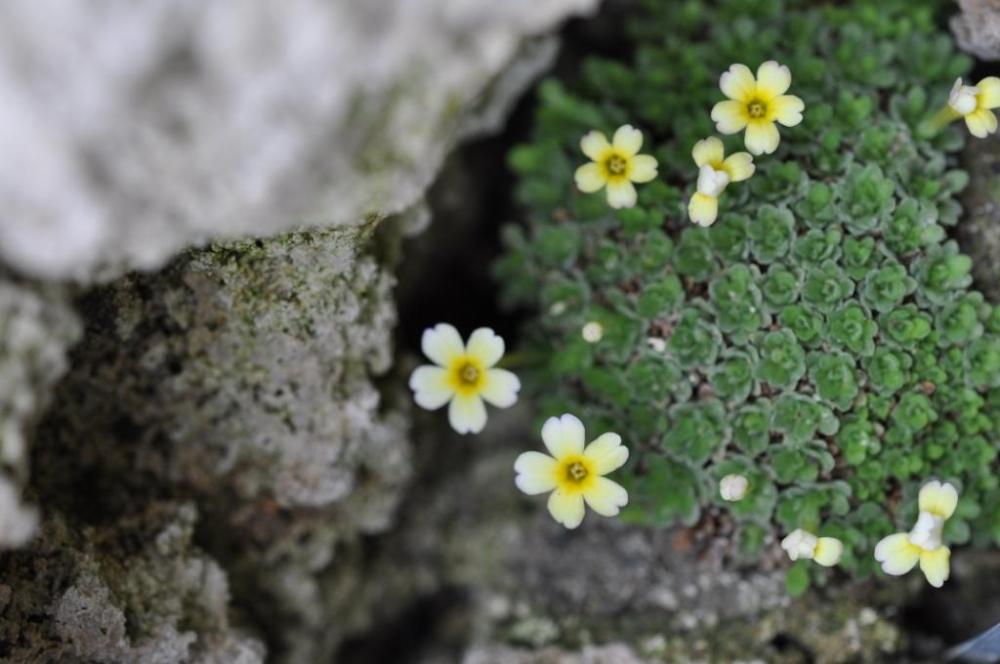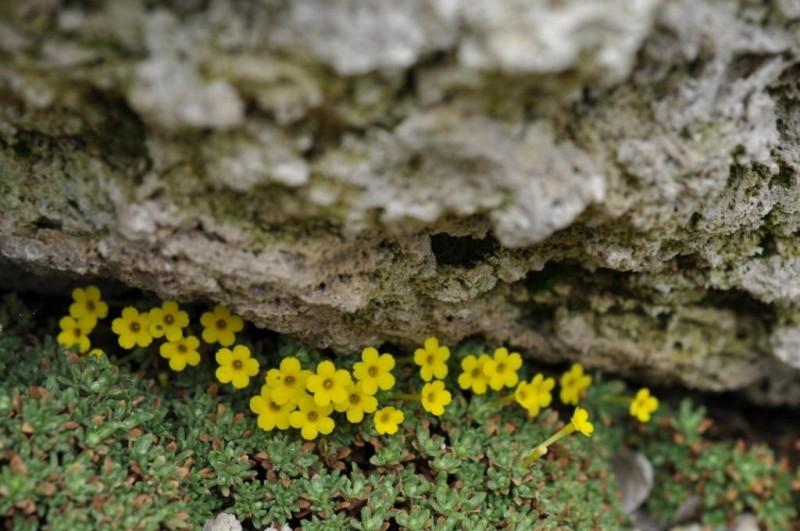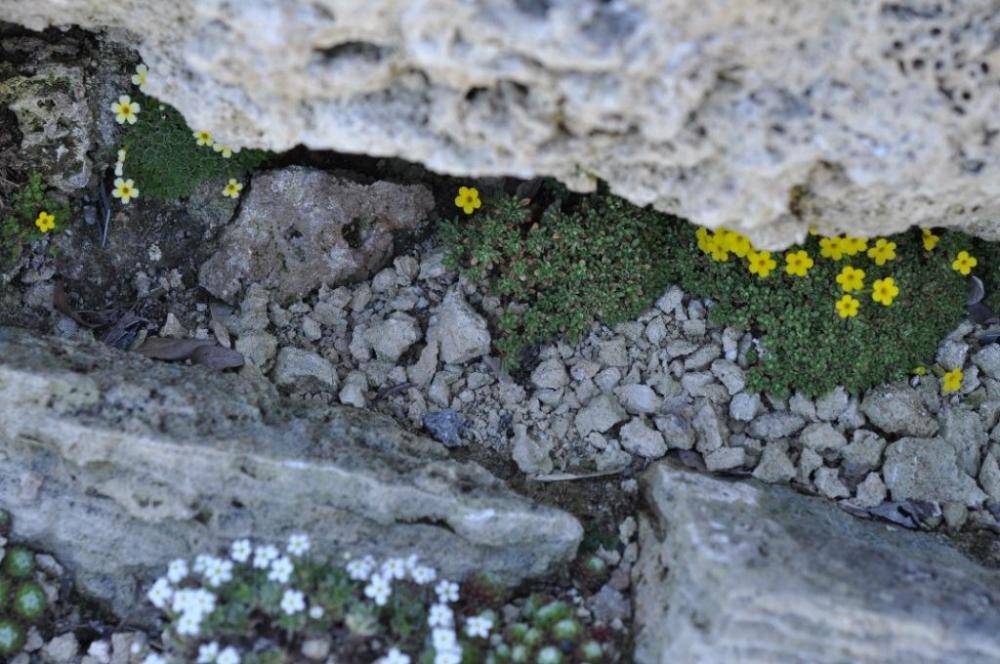Growing Dionysia
The plants in genus Dionysia are some of the most demanding in cultural requirements that few people attempt to grow them. They possess beautiful flowers, form tight domes of tiny leaves and the intriguing habit of growing on near vertical walls with a ledge of rock protecting them from full sun and weather.

Clearly, they are not easy to please. Mostly they are grown in pots in a sand plunge bed in an alpine house, and so remain a plant for specialist growers/collectors. The few that I have grown are quite heat tolerant, but subject to rot from humidity and careless overhead watering. While we have potted specimens which we sell at the nursery or take with us to a sale, we don't list them as they are too easily damaged in transit. One day in a closed box is about all they can stand.

In our greenhouse, we overhead water as a matter of course - but carefully with the dionysia, allowing them to dry off. I have noticed that a bigger issue was that they are subject to late winter scorch - that is, the side of the plant that faces south will start growth first and the cycle of warm day temperatures w/ freezing night temperatures is too harsh for the new growth, causing those south facing rosettes to die-off. The solution is to provide indirect, bright light, mimicking the north facing "under-ledges" that they inhabit in nature.

When Josef Halda was here in 2009, he constructed just such an under-ledge and put in a line of plants. I didn't really hold out much hope; but, 6 out of 8 have survived and the floral display is well worth the effort. The construction is straightforward: any large slab of stone can be supported and counter-weighted on one end enough that a small den can be dug out on the underside. Make the exposure to the north or north east and the plants will be protected from scorch.

Comments (0)
Add new comment